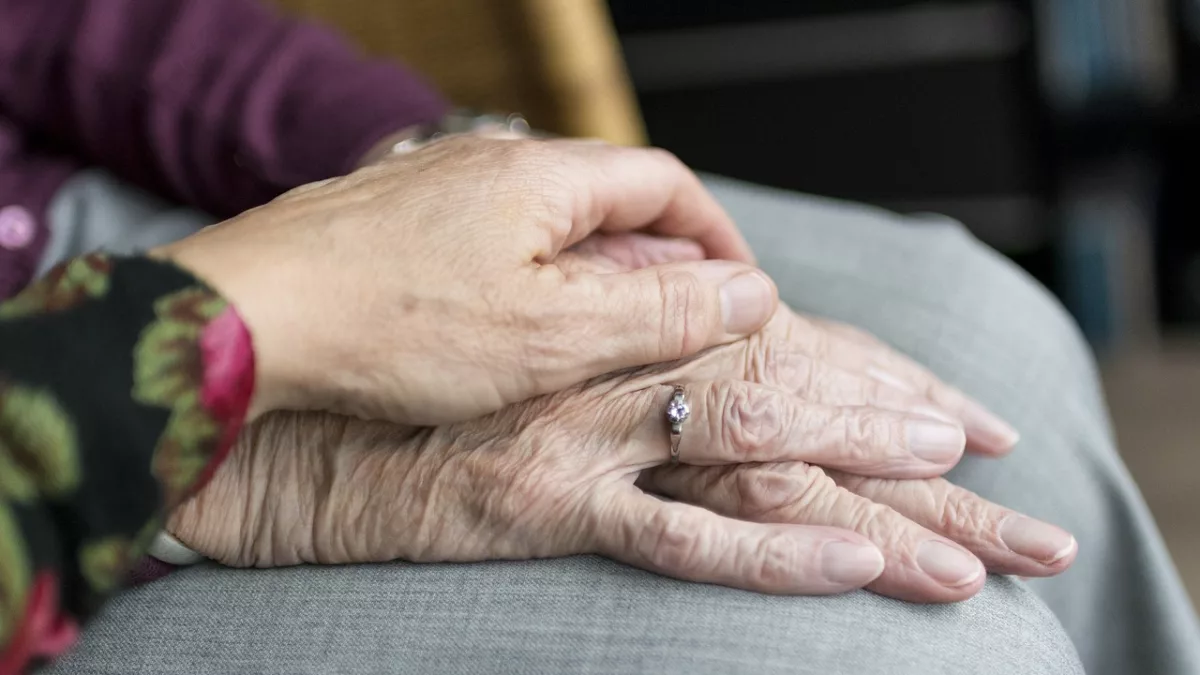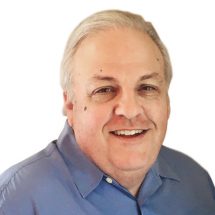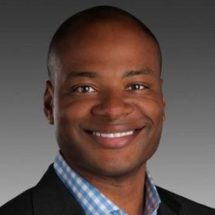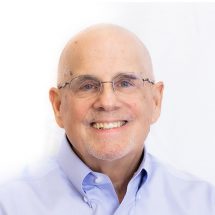Background of PACE; why transportation is vital for PACE programs
The Program of All-Inclusive Care for the Elderly (PACE) model for care is focused on the central understanding that it is highly beneficial toward the total well-being of seniors with chronic care needs and their families to receive the help that they desperately need and to be served within the comfort and safety of their community whenever possible.
With the appreciation of helping to best serve the elderly patients for every need there are some fundamental considerations when choosing to enroll with a PACE service provider. Certain requirements must be met.
PACE furnishes individuals who are age 55 or older, certified by their state to require nursing home care, but are able with help to live safely in the community at the time of enrollment, and live in a PACE service area.
While all PACE members must be certified to need nursing home care to register, it is estimated that only about seven percent of PACE participants nationally actually reside in a nursing home. Appropriately, if a PACE member needs nursing home care, the PACE program pays for it and will also progressively carry on managing the member’s care.
Summary to Qualify for PACE1
- Be 55 or older
- Live in the service area of a PACE organization
- Need a nursing home-level of care (as certified by your state)
- Be able to live safely in the community with help from PACE
A service area is considered as the geographic area where the plan accepts members. The plan may restrict membership based on the location where people reside. Service area plans may limit the doctors and hospitals that may be accessible. The service area is also generally the area where you receive regularly scheduled (non-emergency) services. Keep in mind that a PACE membership plan may release an individual if you move out of the plan’s service area.
Support services to consider
The challenges of trying to deliver the necessary medical and support services are that the PACE program is designed to supervise the entirety of care and services to seniors with chronic healthcare needs. All with the goal in mind of helping individuals to maintain their independence in their home for as long as possible.
Services include a host of healthcare programs such as adult day care which offers nursing, physical, occupational and recreational therapies. Chef created meals as well as tailored nutritional counseling. All-encompassing social development and empowerment of people and communities as well as home health care and personal care. Medical care created to provide a PACE physician studied with the history, demands, and preferences of each member.
If you enter a PACE program, you’ll receive your Part D-covered drugs and all other needed medication from the PACE program. Joining a separate Medicare Prescription Drug Plan for all your necessary prescription drugs is not necessary. PACE will supervise your social services and medical specialties such as audiology, dentistry, optometry, podiatry, speech therapy, respite care, and hospital and nursing home care when needed.
Summary of Services that PACE Covers2
- Adult day primary care (covering doctor and recreational therapy nursing services)
- Dentistry
- Emergency services
- Home care
- Hospital care
- Laboratory/x-ray services
- Meals
- Medical specialty services
- Nursing home care
- Nutritional counseling
- Occupational Therapy
- Physical therapy
- Prescription drugs
- Preventive care
- Social services, covering caregiver training, support groups, and respite care
- Social work counseling
- Transit to the PACE center for activities or medical appointments, if medically required. You may also be able to receive transportation to medical appointments
The History of PACE3 Programs
The PACE model of care dates to the early 1970s, when the Chinatown-North Beach community of San Francisco saw the need for long-term care services by families whose elders had immigrated from Italy, China and the Philippines. William Gee, DDS, a public health dentist, lead the panel that hired Marie-Louise Ansak in 1971 to explore solutions. Along with other community figureheads, they formed a nonprofit corporation called On Lok Senior Health Services to build a community-based system of care. On Lok is a Cantonese expression for “peaceful, happy abode.”
1971 William Gee, DDS, and two others execute articles of incorporation for the nonprofit Chinatown-North Beach Health Care Planning and Development Corporation (later renamed On Lok Senior Health Services) and retain Marie-Louise Ansak to study the feasibility of building a nursing home in the community. She finds a nursing home would be financially impractical and culturally unbefitting. Instead, she obtains funding to train health care workers in cooperation with the University of California San Francisco. She also outlines a diverse system of care integrating housing and all required medical and social services based on the British day hospital model developed in a community hospital to meet the complex medical and social needs of the frail elderly.
Today PACE is a Medicare and Medicaid program that helps people meet their health care needs in the community instead of going to a nursing home or other care facility.
With PACE, you will have a team of health care professionals operating with you and your family to make sure you receive the organized care you need. Typically, they care for a small number of members, so they really know you.
| Date | PACE Development Milestones |
| 1973 | On Lok opens one of the nation’s first adult day centers in San Francisco. |
| 1974 | On Lok begins receiving Medicaid reimbursement for adult day health services. |
| 1975 | On Lok adds a social day care center and includes in-home care, home-delivered meals and housing assistance in its program. |
| 1978 | The On Lok Model of Care expands to include complete medical care and social support of nursing home-eligible older individuals. |
| 1979 | On Lok receives a four-year grant from the Department of Health and Human Services to develop a consolidated model of delivering care to persons with long-term care needs. |
| 1983 | On Lok is allowed to test a new financing system that pays the program a fixed amount each month for each person in the program. |
| 1986 | Federal legislation extends the new financing system and allows 10 additional organizations to replicate the On Lok service delivery and funding model in other parts of the country. |
| 1987 | The Robert Wood Johnson Foundation, the John A. Hartford Foundation and the Retirement Research Foundation provide funding to On Lok and the first replication sites to support their efforts. |
| 1990 | The first Programs of All-Inclusive Care for the Elderly (PACE) receive Medicare and Medicaid waivers to operate. |
| 1994 | With the support of On Lok, the National PACE Association (NPA) is formed. 11 PACE organizations are operational in nine states. |
| 1996 | 21 PACE programs are operational in 15 states. |
| 1997 | The Balanced Budget Act of 1997 establishes the PACE model as a permanently recognized provider type under both the Medicare and Medicaid programs. |
| 1999 | Interim Regulation is published in November. 30 PACE programs are operational in 19 states. |
| 2000 | The Robert Wood Johnson Foundation and the John A. Hartford Foundation fund the PACE Expansion Initiative to assist NPA in expanding the benefits of the PACE model of care to more families in need. |
| 2001 | Alexian Brothers Community Services in St. Louis becomes the first PACE provider to become a full, permanently recognized part of the Medicare and Medicaid programs. |
| 2006 | Final Regulation is published in November. Congress awards grants of $500,000 to 15 organizations for rural PACE expansion. |
| 2014 | 107 PACE programs are operational in 32 states. |
| 2015 | The PACE Innovation Act is passed by Congress and signed into law by President Obama. 116 PACE programs are operational in 32 states |
| 2018 | 123 PACE programs are operational in 31 states serving an estimated 45,534 participants. |
| 2019 | PACE Final Rule is Published. 130 PACE organizations are operational in 31 states serving over 50,000 participants. |
So, How Does PACE Work?
PACE covers all Medicare and Medicaid covered care and services, and other assistance that the PACE team of health care professionals deem required to enhance and preserve your health. This encompasses drugs, as well as any other medically mandatory care, like doctor or health care provider visits, transportation, home care, hospital visits, and even nursing home stays when required.
If you have Medicaid, you will not have to pay a monthly premium for the long‑term care portion of the PACE benefit. If you have Medicare but not Medicaid, you’ll be billed a monthly premium to cover the long‑term care share of the PACE benefit and a premium for Medicare drug coverage (Part D). With PACE, there’s never a deductible or copayment for any drug, service, or care approved by the PACE team of health care professionals.
The PACE model of care emphasizes a person-centered approach that seeks to promote independence, dignity, and quality of life for older adults. The program provides a wide range of services, including medical care, nursing care, social work services, rehabilitation, transportation, and other support services.
Overall, the Program of All-Inclusive Care (PACE) for the Elderly has become an important part of the healthcare system in the United States, providing a valuable alternative to institutionalization for older adults who require a high level of care and support.
Keeping Seniors Connected with Transit
Transportation is important for PACE programs because it plays a critical role in ensuring that participants have access to the comprehensive and coordinated care that PACE programs offer.
PACE programs provide a wide range of medical and social services to elderly individuals who are eligible for both Medicare and Medicaid. These services include medical care, home health care, prescription drugs, social services, and transportation. Transportation is particularly important because it enables participants to access the other services offered by the PACE program, such as medical appointments, day center activities, and social events.
Without transportation, many elderly individuals may have difficulty accessing these services, which can negatively impact their health and quality of life. For example, they may be unable to attend medical appointments or receive needed medications, which can lead to worsened health conditions or hospitalizations. They may also become socially isolated and lonely, which can increase the risk of depression and other mental health problems.
Unfortunately, the total cost of missed healthcare appointments in the United States annually is a staggering $150 billion4 (about $460 per person in the US). Not only is it costly, it is a significant health risk for those individuals requiring healthcare attention but unable to find the necessary transportation.
Therefore, transportation is an essential component of PACE programs because it ensures that participants can access the comprehensive and coordinated care that they need to stay healthy and engaged in their communities.
5 Types of Transportation PACE May Provide
Medical transportation plays a critical and necessary role in getting patients to healthcare needs on time. To address this issue, some medical transport service providers, like SendaRide, are offering effective and appropriate transits for different types of medical needs.
- Medical Transportation: Transportation services that are specifically designed to transport patients who require medical assistance, such as those who need oxygen or who are in a wheelchair.
- Medicare Advantage Transportation: Transportation services that are provided to patients who are enrolled in a Medicare Advantage plan. These services may include non-emergency medical transportation to and from medical appointments.
- Non-Emergency Transportation: Transportation services that are provided to patients who do not require immediate medical attention. This may include transportation to and from medical appointments, as well as transportation to other non-medical destinations.
- Non-Emergency Medical Transportation (NEMT): Transportation services that are provided to patients who require medical assistance during transport. This may include transportation to and from medical appointments, as well as transportation to other medical facilities.
- Patient transportation: Patient transportation refers to the process of moving patients from one location to another for medical purposes. It can include transportation to medical appointments, hospitals, and other healthcare facilities.
SendaRide is a non-emergency medical transportation (NEMT) service that offers many transportation solutions for PACE program members, PACE centers and loved ones. SendaRide offers door-to-door service, greeting the rider from their doors or a designated pick-up location, and assisting them to the door of their medical appointment or healthcare facility. This service is particularly helpful for patients who have difficulty getting around on their own.
SendaRide, is specifically designed to meet the needs of patients with medical conditions. This can include wheelchair vans, walkers, and other forms of mobility difficulties.
SendaRide has designed solutions to provide safe, reliable, and affordable transportation for individuals and will soon include wheelchair vans with ramps or lifts to allow patients to enter and exit the vehicle safely and comfortably.
SendaRide prioritizes the safety of passengers. This includes credentialed and vetted drivers, inspected and well-maintained vehicles, and safety features such as the option to add special notes for drivers and audio recordings of the ride, protecting the riders and the drivers.
These vital solutions of specialized transportation services for seniors and people with disabilities are a must to a patient’s success in life. Programs like PACE can also provide comprehensive medical and social services to seniors who wish to remain in their homes.
Senior Care Option Types
Adult day care, senior living, assisted living, and independent living are different types of housing and care options available for older adults.
Adult day care provides supervised care for seniors during the day, while their primary caregiver is at work or unable to provide care. It typically offers activities, meals, and socialization opportunities.
Senior living encompasses a wide range of options for older adults, including independent living, assisted living, and memory care. These communities typically offer housing, meals, and some level of support or care, depending on the needs of the individual.
Assisted living is a type of senior living that aids with activities of daily living (ADLs), such as bathing, dressing, and medication management. It also often includes meals, housekeeping, and social activities.
Independent living is a type of senior living that offers a more independent lifestyle for older adults who do not require assistance with ADLs. It often includes housing, meals, and social activities, but does not provide medical or personal care services.
Managing Health Care Costs with Preventive Care
PACE programs aim to help seniors live safely and independently in their communities for as long as possible, rather than requiring institutionalization in a nursing home. By providing a wide range of services and support, PACE programs can help seniors maintain their health and independence while also improving their quality of life.
When a healthcare facility’s patient population stays healthy, the facility saves money that would have been spent managing chronic conditions. This is because the costs associated with treating chronic conditions can be substantial, including expenses for medications, medical equipment, hospitalizations, and other healthcare services. In addition, chronic conditions often require ongoing management and monitoring, which can be time-consuming and costly for healthcare providers.
By promoting preventive care and healthy lifestyle choices, healthcare facilities can help their patients avoid or delay the onset of chronic conditions, reducing the need for costly medical interventions. For example, healthcare providers can encourage patients to maintain a healthy diet, exercise regularly, quit smoking, and manage stress. They can also provide preventive services such as immunizations, cancer screenings, and blood pressure checks.
Preventive care can help patients stay healthy and avoid costly medical interventions, which can benefit both the patient and the healthcare facility. In addition, promoting preventive care can improve the overall health of the community, reduce healthcare costs, and improve the quality of life for patients.
Preventative care can help older adults maintain good health, manage chronic conditions, and prevent the onset of new health problems. By investing in preventative care, adult day care organizations can reduce healthcare costs for their members and improve their quality of life.
In addition, many adult day-care organizations are required to meet certain standards and regulations related to the health and safety of their members. Providing preventative care can help these organizations meet these requirements and maintain their accreditation.
Furthermore, by promoting preventative care, adult day care organizations can establish themselves as trusted providers of healthcare services for older adults. This can help them attract new members and retain existing ones, which is important for their financial sustainability. Overall, the provision of preventative care is an important part of the mission of many adult day care organizations.
PACE Transportation is a Requisite for Healthy Communities
As the aging population increases, more and more seniors will have to give up driving due to age related frailties, visual and cognitive difficulties. Older adults who suffer from chronic conditions and/or cognitive impairment need support with transportation once they can no longer safely provide their own transportation. Therefore, it is vital for communities to furnish transportation options for older adults to meet basic mobility needs to enable older adults to remain as independent as practicable in the community. Older adults are diverse, so one size fits all transportation solutions are insufficient.
To address the issues, the 5 A’s of senior companionable transportation were developed, and they are:
- Availability
- Acceptability
- Accessibility
- Adaptability
- Affordability
Despite this guidance, there is very little support concerning the transporting of frail older adults.
These older adults, referred to as PACE enrollees, are low income and nursing home eligible with multiple co-morbidities in addition to having functional and/or cognitive impairments. Recurrent interaction with the PACE interprofessional team allows for recognition of changes in health status allowing for early intervention of members significant to creating lower hospitalizations and decreased mortality.
Many older adults who are PACE members depend on PACE providing round-trip transportation services to and from their place of residence to the center. Transportation services are essential for older adults to access PACE coordinated managed care and other benefits provided at the center, such as socialization and recreation. The Centers for Medicare and Medicaid Services (CMS) mandate that transportation be provided as specified in the PACE enrollees individualized care plan and must include a communication plan for the van drivers to inform the interprofessional team of an enrollee’s change in condition.
PACE models of care are both health providers and health care insurers delivering community-based long-term care for nursing home appropriate persons who are Medicaid eligible (9%) or dually eligible for Medicare and Medicaid (90%)5. Older adults who register in PACE receive care from an interprofessional team incorporating primary care providers (physicians and/or nurse practitioners), nurses, social workers, physical therapists, occupational therapists, recreation therapists, dietitians, certified nursing assistants (CNA), transportation coordinators, van drivers.
The PACE transportation departments typically incorporate dispatchers and drivers that enable the safe transportation of enrollees. Drivers are an important part of the interprofessional care team. They are many times the first team members to notice and report changes in a passenger’s health or behavior.
PACE transportation lines up with the 5 A’s of senior companionable transportation which include: availability, acceptability, accessibility, adaptability and affordability. Based on a members care plan, PACE transportation is readily accessible for trips to and from the PACE center, doctor’s appointments, and group trips for recreational activities. PACE vans are safe, clean and user-friendly, ensuring acceptability. Specialized PACE vans are accessible for those with physical disabilities incorporating wheelchair lifts. The adaptability of PACE transportation is exhibited by individualizing transportation for each member’s needs. As transportation is a member service provided by PACE there is no charge.
PACE and other community based long-term care settings play a significant role in transporting large numbers of older adults to PACE centers, appointments, and senior centers. Safely transporting older adults will remain a crucial element of community based long-term care. Developing environments, policies and procedures is essential to ensuring that older adults, the van assistants and van drivers are safe.
Conclusions
The outcomes of PACE programs have been positive. There has been consistent census growth, enthusiastic consumer satisfaction, curtailment in use of institutional care, managed utilization of medical services, and cost savings to public and private payers of care, including Medicare and Medicaid. However, starting up a PACE program requires considerable time and capital, and the model has not yet engaged large numbers of older middle-income adults.
The expanding growth in the number of older people in the United States challenges healthcare providers and policy makers alike to provide the best in high quality care in an environment of limited resources. The PACE model’s total package of health and social services, its cost-effective synchronized system of care delivery, and its practice of integrated financing have wide applicability and appeal.
—
Tags In
Recent Articles
- Dialysis Treatment and Transportation August 8, 2023
- Importance of Transportation for Hospital Systems April 17, 2023
- Background of PACE; why transportation is vital for PACE programs April 3, 2023
- Cancer Survivor Gives Back March 30, 2023
















![Rachel Kern[8115] Rachel Kern[8115]](https://www.sendaride.com/wp-content/uploads/2019/06/Rachel-Kern8115-214x214.png)


























